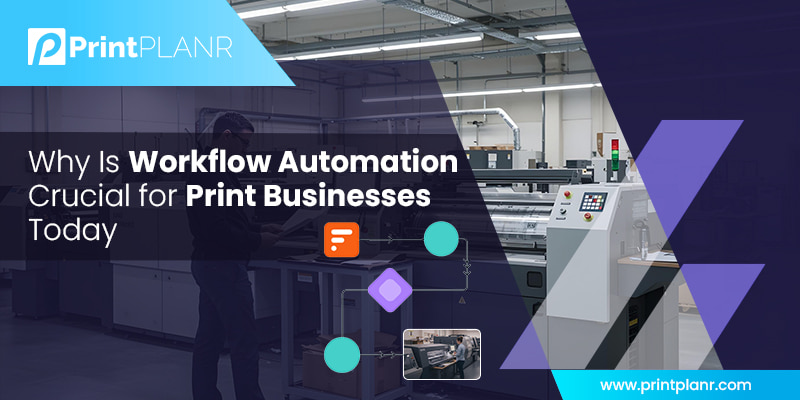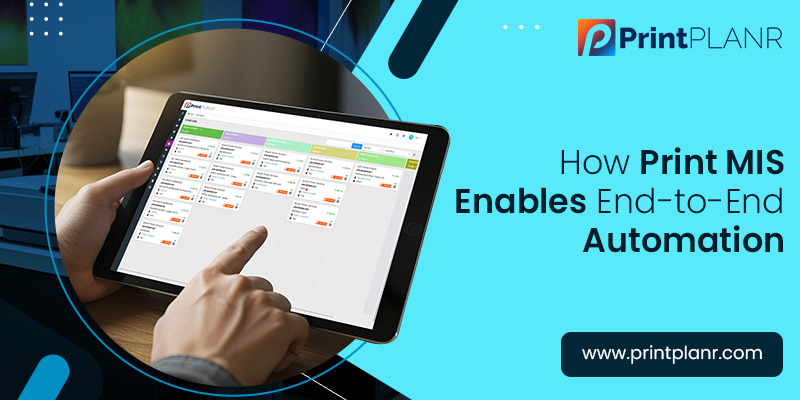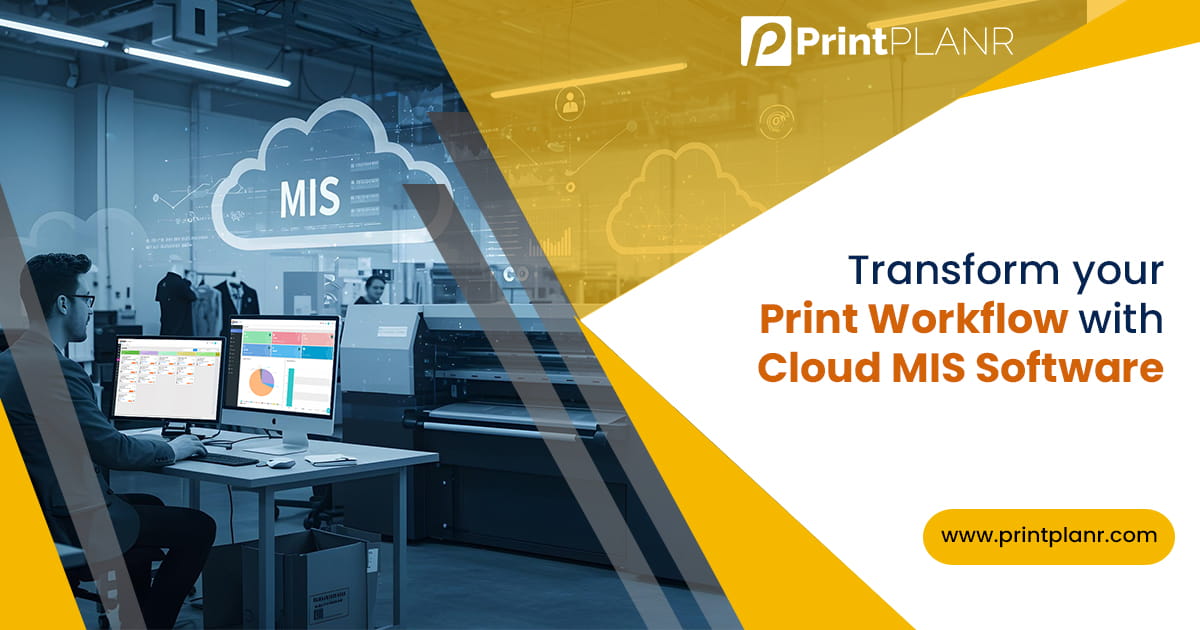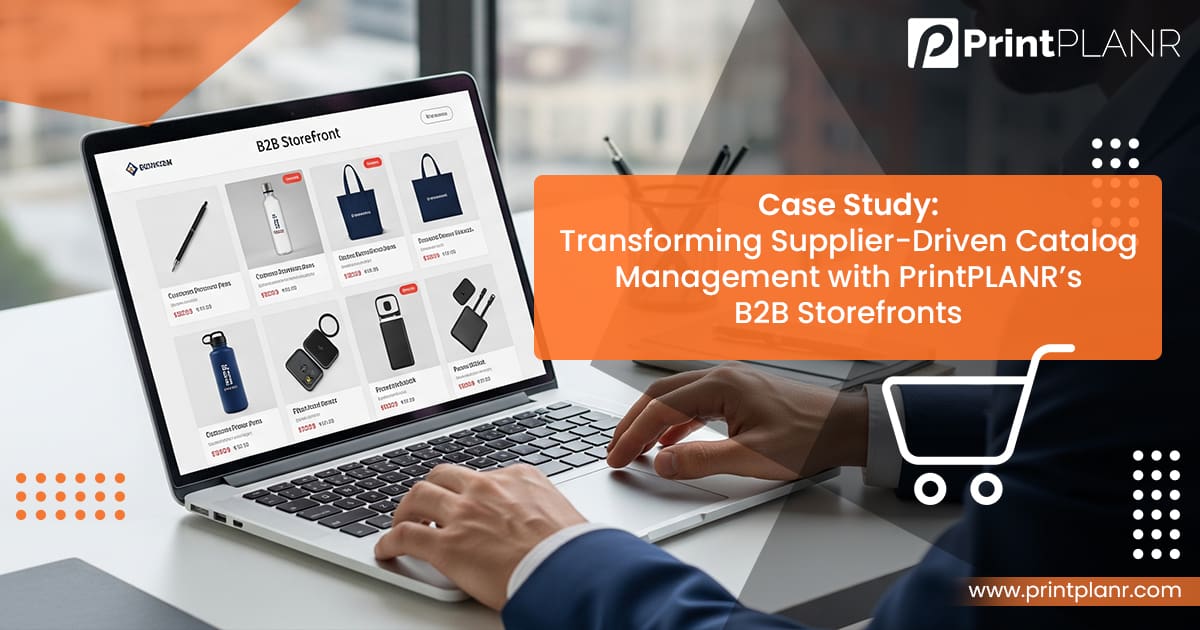End to End workflow automation with print MIS Software
Have you ever found yourself wondering why, despite having a skilled team and quality equipment, your print jobs still miss deadlines, errors creep into orders or customer communication breaks down?
In the technology-driven print industry, efficiency is a competitive necessity. From digital and offset printers to packaging and signage businesses, companies are expected to deliver faster turnarounds, customized orders, real-time updates and error-free execution.
Yet behind the scenes, many print businesses still rely on outdated systems—manual job tickets, siloed spreadsheets, email threads and disconnected software. These legacy processes not only slow down your team but also increase operational costs, lead to miscommunication, and put customer satisfaction at risk.
This is where end-to-end workflow automation with Print MIS (Management Information System) software steps in—not just as a tool but as a strategic transformation.
What Is End-to-End Workflow Automation in Print?
End-to-end workflow automation refers to the complete streamlining of your print operations—from the moment a customer requests a quote to the final job delivery and invoicing. Every step, every approval, every resource allocation automated and connected.
Think about how many systems or steps are involved in a typical print order:
- Quote request and approval
- Job creation and scheduling
- Artwork proofing
- Material check and inventory allocation
- Production task routing
- Quality checks
- Dispatch and delivery coordination
- Invoicing and payment follow-ups/li>
In traditional environments, each of these is handled by separate people, separate tools, or worse paper trails. The result? Inefficiency, miscommunication, errors, and missed deadlines.
With a cloud-based Print MIS system, these operations flow seamlessly. Data moves automatically from one stage to the next. Updates are reflected in real time. Alerts and triggers are built-in. Your team collaborates across departments without friction.
Why Is Workflow Automation Crucial for Print Businesses Today?

Let’s take a moment to reflect on the shifts happening around us. Customers now expect same-day quotes, real-time updates, and shorter delivery times.
Print businesses are juggling increasing job complexity, smaller runs, personalized prints, hybrid printing technologies and tighter profit margins.
In this climate, businesses that continue with manual coordination, spreadsheets, and disconnected systems struggle to scale, let alone thrive.
Workflow automation enabled by a Print MIS does more than speed things up—it brings visibility, reduces waste, ensures accuracy, and makes your team more productive.
It’s the difference between:
- Guessing job status vs. knowing it instantly
- Reacting to missed deadlines vs. preventing them proactively
- Chasing paper trails vs. reviewing real-time dashboards
- Managing chaos vs. running a predictable operation
How Print MIS Enables End-to-End Automation
Let’s now explore how a robust Print MIS system empowers every stage of your workflow—from intake to invoice.

-
Smart Job Estimation and Quoting
The automation journey begins with accurate, fast, and consistent quotes. A Print MIS platform uses pre-set pricing templates based on your press types, materials, labor, and finishing configurations.
So when a customer requests a quote, the system automatically calculates costs, margins and turnaround time—ensuring you’re never under- or over-quoting. Once approved, the estimate seamlessly transitions into a job ticket without re-entering data.
-
Automated Job Ticketing and Scheduling
As soon as a job is created, Print MIS assigns it a digital job ticket that flows through each production stage prepress, printing, finishing, packing, dispatch.
The system schedules tasks based on resource availability—press capacity, operator shifts, and deadlines—ensuring optimal load balancing and realistic timelines.
Your production manager no longer needs to reshuffle priorities manually. The system does it in real-time, with drag-and-drop flexibility and automated alerts for bottlenecks.
-
Inventory Control and Purchase Triggers
Gone are the days of running out of substrates mid-job or overstocking materials that go unused.
With Print MIS, inventory levels are tied directly to job tickets. As a new job is scheduled, the system checks for required materials, allocates stock, and flags low levels. Purchase orders can be automatically generated based on threshold triggers.
This tight integration between job planning and stock management helps you reduce waste, maintain lean inventory, and avoid costly delays.
-
Integrated Artwork Proofing and Customer Approvals
Print MIS platforms streamline artwork proofing by providing online portals for file uploads, version control, and client feedback.
Instead of long email threads or offline meetings, customers can review, comment, and approve artwork through a centralized system. Once approved, the design file is linked to the job ticket and flows directly to prepress—avoiding confusion and ensuring traceability.
This accelerates turnaround and improves customer satisfaction.
-
Real-Time Production Tracking
As the job enters production, operators can scan job tickets using barcodes or update job statuses digitally. Supervisors can view live dashboards showing:
- Job progress by stage
- Time spent on each task
- Press/machine status
- Job delays or pending approvals
This real-time visibility allows for agile decision-making. Production issues are flagged instantly. Tasks can be reallocated or escalated proactively.
-
Delivery and Dispatch Automation
Once production is complete, the system transitions the job to dispatch. Based on delivery preferences (partial, consolidated, or direct), the MIS generates dispatch notes, links to carrier portals, and provides tracking IDs.
Customers receive automated notifications when orders ship, and your team gets delivery confirmation updates—eliminating follow-ups and lost packages.
-
Invoicing and Accounting Integration
The final step billing—is no longer manual.
Once a job is marked complete, the MIS auto-generates invoices based on approved estimates and actual job execution. Invoices can be emailed directly to customers or synced with your accounting platform for payment processing.
This not only speeds up cash flow but reduces invoicing errors and ensures consistency across jobs.
Benefits That Go Beyond Time-Saving
End-to-end automation with Print MIS does not just save time but it enhances your entire business operation.
-
Improved Accuracy:
Fewer manual touchpoints mean fewer errors.
-
Higher Productivity:
Your team focuses on value-added tasks, not chasing data.
-
Better Visibility:
Live dashboards provide clarity across departments.
-
Increased Profitability:
Accurate quoting, cost control, and efficient scheduling drive margins.
-
Stronger Customer Experience:
Fast quotes, clear communication, and on-time delivery foster trust.
In short, Print MIS gives you control, speed and scalability without adding overhead.
The Future of Print Is Automated
Workflow automation is becoming a necessity for print businesses of all sizes looking to grow, stay lean and deliver consistently.
If your current processes still rely on email threads, paper tickets, spreadsheets, or disconnected software tools, it’s time to consider a smarter system.
Ready to take the first step?
PrintPLANR offers a comprehensive, customizable MIS platform tailored specifically for the print industry—helping you automate from quote to invoice with ease.
Schedule your free demo today and explore how PrintPLANR can transform your print operations from fragmented to fully connected.
Recent Posts
Seamless Shopify Integration with PrintPLANR MIS: A Case Study
-
End to End workflow automation with print MIS Software
August 18, 2025 -
Why Are Print Businesses Switching to Cloud MIS Software?
August 18, 2025
Popular Posts
Seamless Shopify Integration with PrintPLANR MIS: A Case Study
-
Why PrintPLANR Is The Best Sign MIS For Signage Industry
October 2, 2020 -
How PrintPLANR Web2Print Is Useful For Promotional Companies
November 9, 2020


